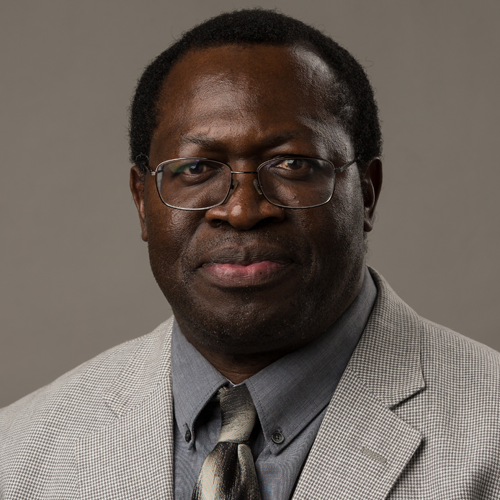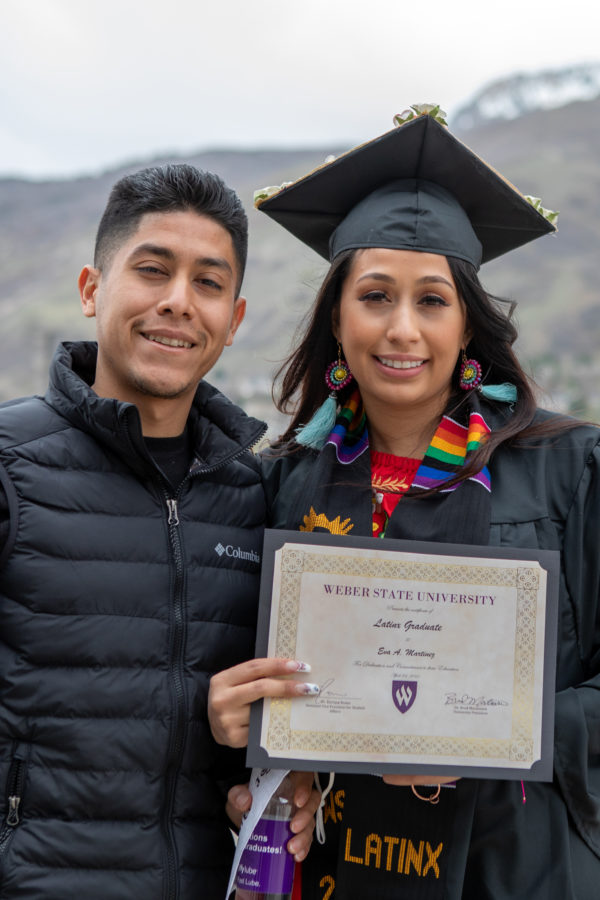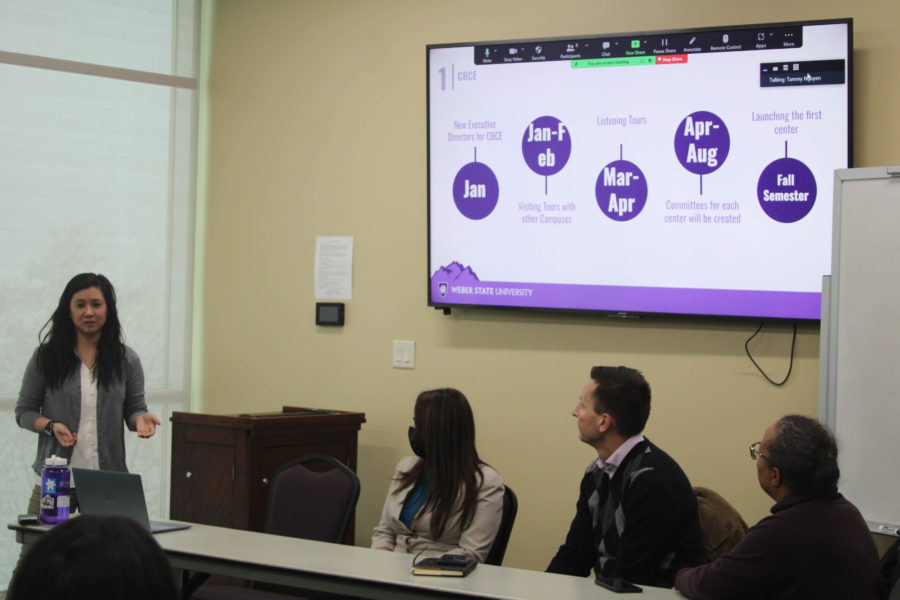
The term Hispanic was created to uniformly lump together different groups of people in order for the U.S. government to count and describe them for the census, according to the Pew Research Center. Individuals of Latin American origin or descent are now taking control and creating their own narrative by using the terms Latino, Latina, Latinx, Chicanx, Xicanx and nationalist labels — like Salvadoran-American.
In 1930, according to the Pew Research Center, the U.S. government and census labeled all Latinx people as Mexican.
It wasn’t until 1970 that the Census Bureau asked people if they were “Mexican, Puerto Rican, Cuban, Central or South American, Other Spanish.” However, Americans were reporting they were from Central and South America, thinking the answers pertained to south and central regions within the U.S.
Searching to definitively label this population, a diverse group of federal employees met in 1975 as part of the Ad Hoc Committee on Racial and Ethnic Definitions, according to the Washington Post. They decided to classify the Latinx community as Hispanic and do away with offensive terms that had previously been used such as colored and oriental.
The terms Hispanic and Latino are exclusionary. Hispanic refers to Spanish-speaking people, leaving out Portuguese-speaking Brazil, South America’s largest country.
The Spanish language is built on feminine and masculine nouns. The term Latino disregards women, non-binary people and the transgender community. It is because of this exclusion that some within the community have turned to using Latinx, the gender-neutral or non-binary alternative to Latino and Latina.
Weber State University Assistant Vice President for Student Affairs Enrique Romo, who identifies as Mexican-American, undertook the label Hispanic despite how he felt.
“I have been all over the place in terms of how I identify. I think when I was younger, we would call ourselves Mexican-Americans,” Romo said. “But then we heard Hispanic, and it was a way to lump all these people from Latin America. It didn’t feel right to me, but that was what was recognized by the federal government. We used it because it was easier and people were familiar with it.”
During his adolescence, Romo said identifying as Mexican or Chicano came off as seeking trouble or not wanting to assimilate.
Chicano refers to someone who is native or a descendant from Mexico and who lives in the U.S., according to Generating Engagement and News Initiatives for All Latinos. Xicanx, a variation of Chicano, highlights Indigenous ancestry while rejecting Western colonization.
Self-identified Chicana Andrea Hernández, WSU diversity and inclusive programs coordinator, said people do not have to be Mexican-American to label themselves as Chicanx or Xicanx.
“Once the Chicano Movement started to grow to include other identities that were not of Mexican-descent — that included other identities like Salvadorans or Guatemalans — they were able to start adopting this Chicano identity because it started to become an ideology,” Hernández said. “The message was to uplift our community, to reclaim the beauty within our community and the diversity we hold as people of Central America.”
Movements and influential leaders attempted to create unity among Latin Americans, but Latinxs can often tear each other apart, according to WSU freshman Jarali Avendano.
Avendano said she enjoys the customs and traditions of her Mexican heritage, but she doesn’t like Mexican music. Her family questions her about the decision.
“If you don’t like the music, you are told you are basically ignoring your race. They say you’re acting white,” Avendano said of her family.
Gina Arditti, a WSU freshman, moved to the U.S. when she was 7 years old. When she tells people she is Mexican, they often respond by telling her she is white.
“Mexicans can be white; there’s all different types of people,” Arditti said. “People stereotype me by the way I look and say ‘Oh yeah, she’s a white girl.’”
Romo — 9 years old at the time — was on the bus in Mexico with his mother. Four gay men, some wearing make-up, got on and were met with crude remarks and taunting cat-calling. Romo’s mother asked him what was wrong with the scene, to which he replied that people were not respecting the men.
“She goes ‘Don’t ever forget this because you will sometimes walk into a place that you will be the one that sticks out,’” Romo recalled.
Romo’s mother then went to the four men and asked them if they needed anything or if they’d like to get off the bus with her and wait for the next. The men told Romo’s mother they were used to the negativity, and she said they should never allow themselves to get used to being mistreated.
During her undergrad years, Hernández was a member of the organization MEChA, Movimiento Estudiantil Chicano de Aztlan. She said there were members who had not been taught Spanish by their parents, and they were sometimes the butt of the joke.
“It always came off as a joking matter that because you don’t know how to speak Spanish, you are not Chicano, Mexican or Latino,” Hernández said. “To an extent, I feel like those jokes felt appropriate to them, but it’s never appropriate to say those things because it can take an emotional and spiritual toll on somebody.”
The Latinx community contains people who are just entering the U.S. and do not speak a word of English to people who don’t know Spanish because their ancestors immigrated generations ago. To Romo, Hernández, Avendano and Arditti, these people are all Latinx enough.
“We are not a monolith. All of us are different with varying perspectives and lifestyles and the way we see and interpret the world,” Romo said. “I think for me, what it means to be Latino, is to take ownership of who we are as a collective, to understand our history has value and that we will not be erased. To stay honest and true to your roots.”
Romo said defining terms like Latinx, Hispanic and beyond is up to the individual. NUAMES student Sidia Navarrete agrees.
“I feel like there’s not one set definition. It’s unique to everyone. You have to find your own definition for it,” Navarrete said.
Because of her role as an activist, Hernández defines Hispanic as “an umbrella term imposed by the government” to “keep tabs on us.” She does not like using this term because it does not get into the crevices of the various identities.
“This umbrella term Hispanic, I believe, erases the beauty within our diversity. Even worse, it erases the problems that we have in our various communities,” Hernández said.
In order to understand why there are influxes of immigration from certain regions, the U.S. should not approach the matter through a singular lens, according to Hernández. Someone seeking asylum from El Salvador has different reasons than a person seeking asylum from Guatemala. Discussion and acknowledgement is vital in creating opportunities, Hernández said.
“When I think about the opportunities we have now, it’s not because we were just given the opportunities,” Romo said. “It’s because people that look like us fought for us to have the rights we have.”
In 2018, Dolores Huerta — an American labor leader and civil rights activist who co-founded the National Farmworkers Association with Cesar Chavez — visited WSU. Huerta, now 89 years old, was arrested in late August while protesting with union representatives seeking a living wage for home care workers.
“She’s still out there, fighting the good fight and being an activist,” Romo said. “I think that tells us this is who we need to be as a community. We need to fight for our own causes because if we don’t, nobody else is going to fight for us.”
Hernández idolized Celia Cruz, renowned internationally as the “Queen of Salsa.” Cruz was infamous for her lavish style, larger-than-life wigs and breaking the mold of what a “typical” Latina looked like.
“I’ve always looked up to Celia Cruz. She was not skinny; she was a curvy woman,” Hernández said. “She was Afro-Latina. She was the epitome of power.”
Romo looks up to Julián Castro, the youngest member of President Obama’s Cabinet. He believes Castro’s campaign will leave a lasting impression on Latinx children.
“Castro is running for President right now. What is it like for someone to come out of the barrio in San Antonio and be able to go to Princeton and Harvard?” Romo said.
With varying upbringings, traditions and challenges, no two Latinxs are alike. In a world determined to box-in groups, Latinxs are determined to blaze their own paths and leave the door open for those who follow.
“Trataron de enterrarnos, pero no sabían que éramos semillas,” Romo said, describing the Latinx community. “They tried to bury us, but they didn’t know we were seeds.”








